#apicius post
Explore tagged Tumblr posts
Text
Apicius Post: Integratore naturale contro reflusso e indigestione
Apicius Post è un integratore alimentare a base di ingredienti naturali, formulato per aiutare la digestione e contrastare i sintomi del reflusso gastroesofageo. Apicius Post è un valido alleato per la salute del tuo apparato digerente. Come funziona Apicius Post? Apicius Post agisce grazie alla sinergia dei suoi ingredienti naturali: Liquirizia: Lenisce la mucosa gastrica, riduce il bruciore…

View On WordPress
#apicius post#apicius solo natura#benessere digestione#indigestione#integratore naturale#liquirizia#liquirizia per reflusso#reflusso#ReflussoGastroesofageo#rimedi reflusso
0 notes
Text
I did a tour of GO filming locations
It was around London, so I didn't get all of them, but the trip has been such a blast I just have to share the pics!


1. St James park: so many birds! And tourists. Which is good because the secret government agents wouldn't be able to feed so many ducks. I saw pelicans too—they were huge and pink and funny!!


2. Berkley Square (they actually didn't film anything here, but still): it's a giant construction site now. The only birds I spotted were parrots, so many of them, at least 5 nests, and loud too. No sane nightingale would ever come there, this much is true. But the song is referenced on one of the bench plaques <3


3. The Ritz / The Criterion: they both look nothing like the restaurant in the show (maybe the Criterion changed since 2019?) But both are fancy! When my rich uncle leaves me a giant inheritance and I find my 6000 year soulmate, I am so taking them out there, just you wait.

4. The Globe: this is my favourite theatre now!!!Macbeth was magnificent! And the standing tickets were so worth it: actors were down in the crowd and interacted with everyone! I got some of Macduff's blood on me! (Can't get this anywhere else :D) The Globe is closed in winter, so I'm already planning to buy tickets for next year.


5. The Bandstand and the-place-where-Gabriel-was-running: after marinating on Tumblr for so long I felt shocked seeing the word "bandstand" on a physical sign in the park. Like, put up a warning at least, my heart needs to be prepared?? The actual bandstand was at the same time smaller and bigger than I expected. Also those red bits—apparently they were there the whole time; I was imagining it black and white for some reason.
Also I met another crazy fan taking pictures of the bandstand in the rain, and I remember thinking, they have to be just as crazy as me xD

6. Tavistock square (where they switched bodies): the filming crew must have moved the benches around, because the square itself is so tiny and you can only match the scene background if you stand all the way back in the bushes. Surely there must have been a better way.


7. Crystal palace: just as I suspected, you can't see the dinosaurs from the bench because of all the trees in the way. The dinos are hilarious though, they look more like🗿and not like 🦖. In the show Warlock seems to have written a rude word on the teleosaurus info card, how dare he!


8. Tadfield (Hambleden, really): I thought, it's just two hours from London, easy day trip, in and out, what could go wrong. Cue to me stumbling over muddy fields in the dark surrounded by menacing sheep and regretting everything. The village is cute and English and has literally three streets and a post office and nothing else. And sheep.

9. Bonus round, my take on Aziraphale's bookshop xD "Seducing women? I think you've got the wrong shop!"
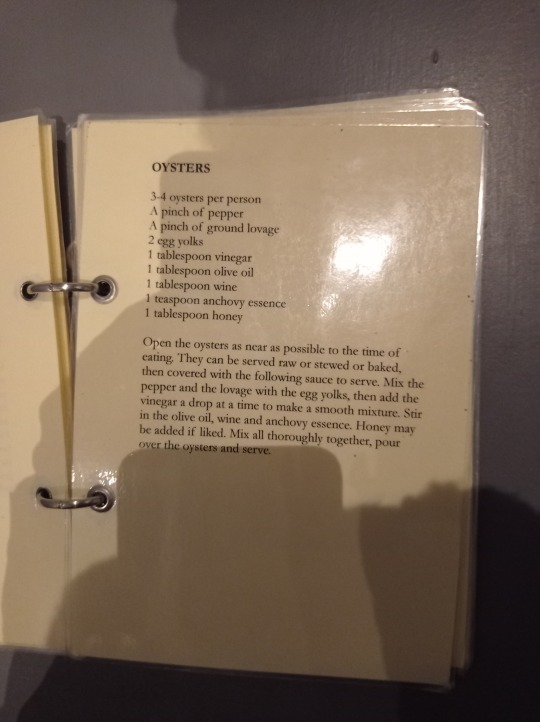

10. Bonus bonus round, food! (am I or am I not the ace of snacks after all?) An oyster recipe from Marcus Gavius Apicius' cookbook (Rome, 1c CE, stumbled upon it in the museum of Reading), and Eccles cakes (soooo sweet they don't calm people down but give them instant diabetes)
And that's it!! Thank you for reading all the way <3 Here is a secret snack 🍎
64 notes
·
View notes
Text
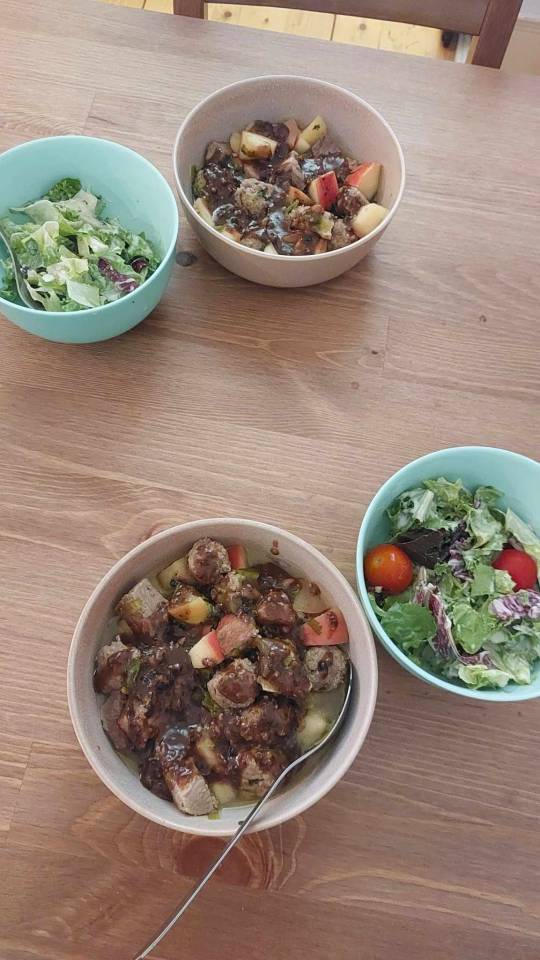

MINUTAL MATIANUM (ROMAN PORK WITH APPLES, 1st c.)
It's a been a tougher week than usual - my husband broke his leg and had surgery, and I'm dealing with some dental pain - but amongst it all, I thought it would be a good idea to treat ourselves with a Tasting History dish that is especially hearty and comforting: Minutal Matianum (Roman Pork with Apples). From the quintessential Roman source by Apicius from the 1st c., De Re Coquinaria, this meat dish is made using ingredients that would have been available to Roman soldiers in Britain, near forts in the area of Hadrian's Wall. This hearty dish was probably closer to what the officers of the Roman army would have eaten rather than the foot soldiers, however. I decided to make this dish because my husband and I have enjoyed most of the Roman recipes I've made so far, and Max exclaimed this was the best Roman dish even he had made so far. We hope this dish provides us with the fortitude of a Roman soldier on the frontiers! See Max’s video on how to make the dish here or see the ingredients and process at the end of this post, sourced from his website.
My experience making it:
As usual for me with Roman recipes, I struggled to compile all of the specific listed ingredients, but I did my best! I sourced a pork shoulder from our local butcher, and for the ground meat, I used a mix of 60% beef and 40% pork (a very common mixture here in Germany). For the pork roast rub, I used oil, a bit of salt, lots of pepper, and a tablespoon and a half of linden tree blossom honey. For the meatballs, I didn't use any egg to bind them, as I didn't have any on hand. Instead of garum, I used an Asian fish sauce (which Max suggests as a substitute). For the apples, I used some sweet Pink Lady apples (which I definitely snacked on while I was cooking). Instead of the long pepper Max used, I used the tablespoon of peppercorns. I decided to omit the asafoetida completely, as I couldn't find it at 4 different supermarkets, including the bio-supermarket and the Turkish supermarket. I've recently learned that I should look instead at an Indian supermarket, so now I'm on the hunt for one! I reduced grape juice myself to make defrutum, as Saba seems a little expensive. Instead of starch/cornflour, I used regular white flour, since I think they would function fairly similarly.
First, I set out making the rub for the pork roast. Nice and simple with olive oil, salt, pepper, and honey, I loved that I could customize this part to my tastes (give me that sharp pepper taste!). Next, because I didn't have a roasting rack, I made one myself out of tin foil by taking a large sheet, rolling it into a snake shape, and curving it into a zig-zag pattern on top of a layer of tinfoil at the bottom of my pan. It fit the pork perfectly, and then I added the rub and tossed it in the oven. My pork shoulder was just over 2 pounds, so I roasted it for just over 2 hours. While it was cooking, I rolled my meatballs (sans egg), ground my spices for the sauce in the mortar and pestle (which took awhile), and chopped and portioned the ingredients for the next steps. When the pork was almost done cooking, I began cooking the meatballs in olive oil, also adding in the leeks. I added in the chicken stock and garum, stirring to get any bits from the bottom to release their flavour.
While this cooked on the stovetop, the pork roast was ready to take out of the oven. It looked wonderful and smelled delicious! I let it sit for a little bit, then chopped it into cubes and added them to the pot with the meatballs. I added in the cilantro, then a little bit more chicken stock so the pork and meatballs were 3/4 submerged and sizzling nicely in the juices. I simmered it for 15 minutes, then added the apple chunks. I simmered it further, but for less than the 20 minutes in the recipe (more like 15). I portioned the meat and apples into our serving bowls to cool a little while I prepared the quick sauce, being sure to leave some of the juices in order to provide the base to the sauce. I added the juices, defrutum, white wine vinegar, garum, and honey to a pot, added the crushed spices/herbs, and brought it to a light boil, stirring often. I made a roux with some flour by mixing a bit of water into it, then added it to my sauce to thicken it. By the looks of it, I think I ended up thickening it a decent amount more than Max did, but I like a thicker sauce, so I wasn't too upset about that. I took it off the heat once it was combined and thickened, and drizzled it over the pork, meatballs, and apples. It looked absolutely scrumptious - the sauce added a nice silky shine to the meat, the leeks added a pretty green, the peppercorns some texture, and the apples a beautiful yellow and red pop of colour. I served the Minutal Matianum with a side Greek Salad to balance the heaviness of the meat.
My experience tasting it:
I made sure my first bite was with pork, apple, and some sauce - it was very tasty! The pork was tender enough, but I might have overcooked it just a little. Luckily, the tougher, hearty texture was balanced by the crisp and light flavour of the apple and the acidity, sweetness, spice-infused, and herbed flavour of the silky gravy-like sauce. Like Max mentioned, the sauce first tastes a bit sour due to the vinegar, but it melts into a sweetness from the defrutum and honey. It is still a very 'Roman' flavour of sauce - I could taste hints of the previous Roman sauces I have made in other dishes in this one, but this one was more like a gravy, and maybe more in line with the modern palate. In terms of herbs and spices, I found that peppercorn and cilantro were the most forward in the sauce - the mint and cumin were just barely there. I decided to make my next bite a meatball with some sauce, apple and leek: an absolute winning combo! I don't always have time to make a pork roast, so I can't see myself making Minutal Matianum often in its complete form, but I will most certainly make the sauce with apples and meatballs again in the future. Like Max, my husband and I both agreed this is our favourite of the Roman dishes I've made so far. This is a great meal for late fall/early winter, and I will probably make it again as the weather gets colder this fall. If you end up making this dish, if you liked it, or if you changed anything from the original recipe, do let me know!
Links to harder-to-find ingredients:
Long Pepper
Flor de Garum
Colatura di Alici (Garum substitute)
Saba (Defrutum)
Asafoetida
Minutal Matianum (Roman Pork with Apples) original recipe (1st c.)
Sourced from De Re Coquinaria by Apicius, 1st century.
Put oil, garum, stock, chopped leek and cilantro and small ground meatballs in a pot. Chop previously cooked shoulder of pork with skin into cubes. Cook all together. Half-way through cooking add cored and diced Matian apples. While it cooks, grind pepper, cumin, cilantro and coriander seed, mint, and silphium root, pour in vinegar, honey, garum, defrutum, and some of the cooking liquid. Adjust the flavors with vinegar. Bring to a boil. Add broken tracta to thicken. Sprinkle pepper and serve.
Modern Recipe
Based on De Re Coquinaria by Apicius (1st c.) and Max Miller’s version in his Tasting History video.
Ingredients:
Roasted Pork
Pork shoulder
Olive oil
Salt
Pepper
Honey
Pork and Apples
1 tbsp olive oil
3/4 lb (340g) ground pork or beef, shaped into 1” balls
1 cup chopped leek
1 cup (235ml) chicken stock, plus extra as needed
2 teaspoons garum*
Small handful chopped cilantro
1 lb (450g) roasted pork, cut into cubes
1 lb (450g) sweet apples, cored and cut into about 1” pieces
Sauce
1 tsp cumin
2 tsp chopped cilantro
1 tbsp coriander seeds
2 tsp chopped mint
4 long peppers or 1 tbsp of peppercorns
1/2 tsp asafoetida
1/4 cup (60ml) white wine vinegar
2 tbsp honey
1 tsp garum*
1/4 cup (60ml) defrutum**
1/4 cup (60ml) cooking liquid from the pork and apples
2 tsp starch or cornflour
*Garum was a fermented fish sauce that was used in a lot of ancient Roman cooking. You can buy a modern equivalent or use an Asian fish sauce.
**Defrutum was a 1/3 reduction of grape must. Today, Saba is pretty much the same thing. It can be expensive, so you can reduce some grape juice instead.
Method:
For the roasted pork: Preheat the oven to 450°F (230°C). Line a baking sheet with foil, then place a roasting rack on top of it.
In a small bowl, mix the olive oil, salt, pepper, and honey. There should be enough to coat the pork roast. Adjust the amounts to your liking.
Brush the olive oil mixture onto the pork, then roast for 15 minutes.
Lower the temperature to 275°F (135°C) and cook for about an hour per pound, or until the internal temperature reaches at least 165°F (74°C).
For the pork and apples: Heat the olive oil in a large pot over medium heat, then add the meatballs and leeks and cook for 8 to 10 minutes, or until they start to brown.
Deglaze the pot with the chicken stock and garum. Toss in the cilantro and roasted pork. Add enough additional chicken stock so that it covers the bottom of the pot.
Simmer for 15 minutes, adding more stock if necessary.
Add the apples, then cook for another 20 minutes or until the meatballs are fully cooked.
For the sauce: Grind the spices and herbs with a mortar and pestle, then put them in a saucepan with the liquid ingredients. Stir together and bring to a gentle boil over medium heat.
Mix the starch with a little water, then add it to the sauce. Simmer for a couple of minutes until it thickens.
To serve: Dish the pork and apples into a bowl, drizzle with the sauce, and serve it forth.
#max miller#tasting history#tasting history with max miller#cooking#keepers#europe#historical cooking#england#great britain#ancient rome#roman meals#roman recipes#1st century#de re coquinaria#Apicius#meat#meatballs#pork#roasts#history
6 notes
·
View notes
Text
trial of Publius Rutilius Rufus
date: 92 BCE charge: lex Servilia (Glauciae) de repetundis (misconduct as legate to Asia) defendant: P. Rutilius Rufus cos. 105 (ORF 44.III) spoke pro se [for himself] advocates: Q. Mucius Scaevola cos. 95 (ORF 67.II) C. Aurelius Cotta cos. 75 (ORF 80.I) prosecutor: Apicius
Posidonius in Athen. 4.66, 168DE = FGrH 2A.27, 233; Cic. Font. 38; Balb. 28; Pis. 95; Rab. Post. 27; de Orat. 1.229-30; Brut. 85, 115; N.D. 3.80, 86; Diod. Sic. 37.5.1; Liv. Per. 70; Vell. 2.13.2; V. Max. 2.10.5, 6.4.4; Sen. Ben. 5.17.2, 6.37.2; Ep. 24.4; Quint. Inst. 11.1.13; Tac. Ann. 4.43; Dio 28, fr. 97; [Asc.] 202St; Flor. Epit. 2.5.3; Oros. 5.17.12-13; see also Tac. Ann. 3.66.2 Pais (1918) 46-49
16 notes
·
View notes
Text
Roman Spiced Wine “Conditum Paradoxum” - The World That Was
This week, I'm going to be making some honey spiced wine that was popular in the Eastern Mediterranean. The name of this comes from Apicius, and roughly translates to "surprise" or "marvellous" spiced wine. This recipe was also recorded in the Jerusalem Talmud, which reaffirms the claims for this drink's popularity in the Eastern Mediterranean and Levant! Given the time of year I'm posting this, it would be a fitting drink to serve for any festivities you might have planned for Saturnalia!
youtube
But before I begin, I just want to make it clear that this is a recipe for an alcoholic beverage, so please don't make this if you're under the legal drinking age where you are! It's 18 in Ireland, but it may be different where you are!
In any case, let's now take a look at The World That Was! Follow along with my YouTube video above!
Ingredients 100g honey 700ml wine (preferably red) 2 bay leaves 2 saffron strands (or a tablespoon of ground turmeric) 2tsp black peppercorns 1 tsp fennel seeds (or 5g mastic gum)
Method 1 - Grind your Spices To begin with, we need to grind our spices. You can use pre-ground spices, but they tend to have a milder taste than freshly-ground ones. Begin grinding your peppercorns into a fine powder. Next, go grind up some fennel seeds. The original recipe explicitly calls for mastic gum - which is the resin from the mastic tree. This can be pretty hard to obtain, so fennel works as a cheaper and more readily available substitute! This will give a herbal, aniseed tone to the drink. Finally, we need to grind up some saffron. Saffron is one of the most expensive spices in the world, with a history of cultivation dating back to the 7th century BC. You can break the saffron strands in between your fingers, if it’s easier for you. If you don't want to splash out and buy some saffron, a few teaspoons of ground turmeric would work in a pinch. When you're done with your spices, it's time to turn to your wine.
2 - Prepare the Honey Pour a third of a cup of your wine, and all of your honey into a pot. Put this over medium-high heat and stir it constantly until the mixture starts to boil, which should take around 10 minutes. When it hits a boil, bring it off the heat, and let the mix cool down. When it's cool, put it back on to the heat and bring it to a boil again. Do this process three times - and on the third time, leave your wine off the heat for a bit, but keep it warm. If it cools down to the point where it acts more like honey than wine, just reheat this over medium heat for a couple of minutes.
3 - Mix the Wine When your honey and wine mix is done, go pour the remainder of your bottle of wine into a bowl or pot, followed by the liquid honey wine. On top of this, toss your ground pepper, fennel seeds (or mastic), bay leaves, and saffron. Stir this to combine and infuse for about 10 minutes. You can let the pot of wine sit overnight, if you want, to let the flavours mingle, but you can serve this immediately too. Pour your wine through a fine mesh strainer, to catch any large pieces of your spices or leaves. Bottle this up, or drink as-is! You might want to water it down slightly, as it results in a much smoother drink than if you drink it straight from the pot, but either way is good!
The finished wine is cloudy, but very sweet! Depending on how you filter this, it might take on a more peppery taste than mine - which is also based on the amount of pepper corns you use too! It might also be clearer than mine. I'd recommend straining your mix through cheesecloth or a very fine sieve, as mine allowed a large amount of pepper through!
#the world that was#roman recipe#roman#wine#spiced wine#mulled wine#Apicius#recipe#easy recipe#archaeology#roman archaeology#edible archaeology#edible history#archaic cooking#culinary archaeology#culinary history#history#ancient history#food history#history of food#history of cooking#Roman Food#food#cooking#ancient cooking#saturnalia#roman religion#jerusalem talmud#honey#honey wine
46 notes
·
View notes
Note
☕️ garum and its usage in ancient rome
so, garum sounds bad, right ("rotted fish sauce? ew!") , and our surviving recipes don't really say how much you use (Apicius is the OP of that "spices? you measure that shit with your heart" post), but it's not actually different from fish sauce. It's strong on its own, definitely, but my beef barley recipe uses a little bit as a flavor enhancer & you can definitely a) taste a difference & b) not tell what's doing it.
now, if you want me to complain about Roman cooking it's that they have a whole bunch of flavor combinations that seem weird to modern palates and they love sweet meat dishes. I like 'em too, but not as sweet as Romans seemed to have.
23 notes
·
View notes
Text
The Schuyler household and enslaved laborers
As noted on the Schuyler Mansion State Historic Site, “Between 1765 and 1804, Schuyler Mansion was home to over sixty Black people of all ages and genders, held in bondage by the Schuylers.”
The following is from Women of Colonial and Revolutionary Times: Catherine Schuyler (1897) by Mary Gay Humphreys. I’m posting the below without commentary, as it’s of interest how these matters were being written about in the late 19th century:
In the Schuyler household the slaves all descended from two old women brought from Africa when they were young. Mrs. Grant gives an amusing account of the “rivalries in excellence” between these two tribes. “Diana was determined that in no respect of excellence Maria’s children should surpass hers; and Maria was equally determined that Diana’s brood should not surpass hers. If Maria’s son Prince cut down wood with more dexterity and despatch than any one in the province, the mighty Caesar, son of Diana, cut down wheat and threshed it better than he. His sister Betty, who to her misfortune was a beauty of her kind, and possessed wit equal to her beauty, was the best seamstress and laundress I have known, and plain unpretending Rachel, sister to Prince, wife to Tytus alas Tyte, and head cook, dressed dinners that might have please Apicius.”
For every department of the household there was a slave allotted. They hoed, drilled, shod horses, made cider, raised hemp and tobacco, looked after the horses and the garden, made and mended the shows, spun, wove, made nets, canoes, attended to the fishing, carpentering, each household sufficient until itself. Slavery probably never took a more unobjectionable form. The negroes were treated with even familiarity; each was allotted his own garden, and was encouraged to raise pets. as in the South, each boy had his boy, and each girl her maid who was given to her on her marriage. Here they lived, and multiplied to old age, no slave being sold unless he proved unmanageable or to be a corrupt influence; and in this case, the threat to send the refractory one to Jamaica or the Barbados was usually sufficient. [pg 37-8]
[It’s unclear if the Prince described above is the same person as this Prince, purchased in 1776.]
The above recollections seem more like family lore and fantasy than historical record.
From the paragraph above, one can also speculate whether Elizabeth Hamilton was given an enslaved woman upon her marriage; it’s not at all clear, though she undoubtedly had at least one servant with her in early 1781.
Here are some other posts I’ve written on this topic with the Schuylers: the legacy of Philip Schuyler, and Philip Schuyler, enslaver.
Check out the Schuyler Mansion blog site for more about the family’s history with slavery; here’s a link to their blogposts on slavery.
1 note
·
View note
Text
La Liquirizia e APICIUS POST di SoloNatura: Un Alleato per la Digestione
La liquirizia non è solo un bastoncino da masticare! Questa radice dal sapore caratteristico vanta una lunga storia di utilizzo come rimedio naturale per diversi disturbi, tra cui quelli digestivi. Come può la liquirizia aiutarci a digerire meglio? Combatte l’infiammazione: La liquirizia aiuta a ridurre l’infiammazione nello stomaco e nell’esofago, alleviando i sintomi di gastrite, reflusso…

View On WordPress
#benessere#bruciorestomaco#colonirritabile#digestione#doloredigestivo#integratoreliquido#pesantezzaallostomaco#PICIUSPOST#reflussoacido#ReflussoGastroesofageo#rigurgitoacido#rimedinaturale
0 notes
Photo

Posted @withrepost • @nachomanzano_casamarcial No podemos estar más felices con este regalo. Compartir este APICIUS 33 con @estimarzafra y ver tu trabajo reflejado en la excelencia de @javiantoja y @mikel_ponce gracias a @montagud1906 @apicius_me (en Casa Marcial) https://www.instagram.com/p/B27G5unnK41/?igshid=18ntv00lfjlll
0 notes
Text
Have You Tried Italian Cooking?
New Post has been published on http://homekitchen.info/have-you-tried-italian-cooking/
Have You Tried Italian Cooking?

Italy is not just one of the most powerful and prominent economies worldwide. Italy is likewise a significant player in music, theater, arts, style, style and naturally– cuisine. There are different Italian restaurants that are providing gastronomic pleasure to its customers. Where could one gather much information about Italian food?
Learning About Italian Foods
Italian food is one of the most popular and tastiest food on the planet. That is why lots of culinary students want to master cooking Italian recipes. Similar to finding out language, finding out Italian food can reach enormous heights and success through immersing or cleaning oneself in the country’s culture.
Lots of Italian cooking schools in Italy already offers bed linen, cooking utensils, furniture, etc. Trainees who have actually gone abroad or to a various school to study simply require bring other necessities and essential clothing. It is necessary to think about that the trainee’s stuff will gradually increase.
Many students invest an entire term or years in cooking schools to expand their understanding and horizon. On the other hand, there are trainees who see that discovering how to cook Italian would be an excellent way to hung around with their vacation. If the trainees are fantastic chefs or simply enthusiastic about cooking, this is regardless.
Schools That Specialize In Italian Food
By taking part to one of the numerous cooking or culinary schools in Italy can enable you to learn the tricks of authentic Italian food while having a good time with individuals who share your interests and enthusiasm. Cooking ability can start from even one of the most fundamental knowledge, there are cooking schools, casual cooking classes and even cooking academies.
Informal cooking classes can last from a day to a couple of weeks. Casual schools or perhaps some culinary schools, develop a fun and casual environment. These experiences can be enjoyable for any level of cook, from amateur or perhaps experts.

Autentico: Cooking Italian, the Authentic Way
Was $35.00
Now $19.27
Buy Now
You Save $15.73
fdev_products['1250124972'] = JSON.parse('\"buy-link-base\":\"http:\\/\\/www.amazon.com\\/gp\\/aws\\/cart\\/add.html?AssociateTag=seoexp-20&SubscriptionId=AKIAICV2O7PSWPFPMUWA\",\"fdev_amazon_single_product\":\"no\",\"items\":\"1250124972\":\"reviews\":\"\",\"asin\":\"1250124972\",\"title\":\"Autentico: Cooking Italian, the Authentic Way\",\"detailpage\":\"https:\\/\\/www.amazon.com\\/dp\\/1250124972?tag=seoexp-20&linkCode=ogi&th=1&psc=1\",\"offers\":1,\"price\":\"$19.27\",\"clean_price\":1927,\"list_price\":\"$35.00\",\"list_price_clean\":3500,\"image\":\"https:\\/\\/m.media-amazon.com\\/images\\/I\\/51zFWn-mEaL._SL200_.jpg\",\"thumbnail\":\"https:\\/\\/m.media-amazon.com\\/images\\/I\\/51zFWn-mEaL._SL75_.jpg\",\"timestamp\":1597020121,\"variations\":[],\"buy-link\":\"http:\\/\\/www.amazon.com\\/gp\\/aws\\/cart\\/add.html?AssociateTag=seoexp-20&SubscriptionId=AKIAICV2O7PSWPFPMUWA&ASIN.1=1250124972&Quantity.1=1\",\"quantity\":1');
Cooking Schools
These are numerous notable schools in Italy that teach cooking and culinary arts:
Alta Societa’ offers extensive courses in premium cooking for striving chefs. They likewise perform day classes for visitors who want to learn the essentials of Italian cuisine.
– Cook Italy uses regional cooking lessons, sepcializing in regional meals in Tuscany and Bologna. Cooking lessons are performed in outstanding locations in Bologna, Cartona, Lucca and even in Siracusa, Sicily.
– Tours and cooking vacations in Italy is what Mama Margaret and Friends are known for. Aside from cooking, they also carry out tours and check outs in vineyards, nation farms and kitchens of regional chefs.
– Culinary Institutes are more comparable to academies. This is not generally for novices, aiming experts and cooks typically go here to find out about Italian cuisine for a full semester. Italian culinary institutes are for those who have an interest in mastering national and regional specialties.
– Apicius- Culinary Institue of Florence uses cooking education for those who are just learning the field. They likewise use a Master in Italian Cuisine course for skilled chefs.
– Designed for non-professional and expert chefs, the Higher Institute of Gastronomy and School of Regional Cooking can be discovered in the heart of the city. They also conduct visits to traditional cheese and balsamic vinegar making facilities.
– Fontana del Papa sets an outstanding intro to Italy. They provide cooking and red wine classes and unique culinary for kids.
Where to find out Italian meals is never a concern in Italy. There are a great deal of Italian cooking and cooking schools, professionals and beginners can go to. Trainees learn more that cuisine and food, they learn a lot about Italian culture. A recent trend is to specialize in Italian baking. This has created a brand new market for better bake ware designed for the hotter ovens used in this style of baking.
That is why lots of cooking trainees would like to master cooking Italian recipes. Comparable to finding out language, learning Italian food can reach tremendous heights and success through immersing or cleaning oneself in the country’s culture.
Numerous Italian cooking schools in Italy already offers bedding, cooking utensils, furniture, etc. There are a lot of Italian cooking and culinary schools, experts and newbies can go to. Students find out more that cuisine and food, they discover a lot about Italian culture.
youtube
0 notes
Text


DULCIA DOMESTICA (ROMAN STUFFED DATES, 1st c.)
To get us through this workweek, I snuck in a mid-week Tasting History recipe - a little something sweet to get us through the next few days of work: Dulcia Domestica (directly translated as homemade sweets), a Roman recipe for stuffed dates from the 1st century. This is one of the very few dessert items mentioned in the earliest Roman cookbook, De Re Coquinaria of Apicius. These specific stuffed dates were a snack available at Ancient Rome's Colosseum during gladiatorial games, among other snacks like sausages and pastries, and they may also have been launched over the crowd as little prizes, like a predecessor to the modern stadium's T-shirt cannon! Most attendees, however, would buy these date snacks from concession workers roaming the aisles of each seating section, much like at stadiums today. The trade of the dulciarius, the sweet shops which produced these stuffed dates, was highly developed at the time of Apicius, to the point that professional bakers and confectioners supplied the entire home market with their sweets, making it rare for a home cook to try and make these themselves. This is largely the same today - making candy is a difficult process, best to leave it to Haribo and the like! This recipe seemed quick and not too laborious, so I just had to try it. I also really wanted to taste an Ancient Roman stadium snack! See Max’s video on how to make this dish here or see the ingredients and process at the end of this post, sourced from his website.
My experience making it:
First off, I halved the recipe (as I often must do with Tasting History recipes), and I decided to use only pine nuts, since I don't really like walnuts. I found some nice, big Medjool dates at the grocery store today on a whim, it seemed meant to be! For the honey, I used German sunflower honey, and I used plain black pepper.
I started by measuring out the honey into a saucepan. Well, I eyeballed it since my honey was quite thick and gloopy. I then sliced the dates open length-wise and removed the pits. Next I crushed the pine nuts with a mortar and pestle. Unfortunately, I seemed to have gotten carried away with this, and I think I may have crushed the pine nuts into too much of a soft crumble. Mine looked less chunky than Max's, at least. Perhaps walnuts are harder to crush? I added the pepper to the crushed pine nuts and mixed until uniform. Next, I stuffed the dates full of the nut mixture with a small spoon, then used the dates' sticky juices to try and seal them up again. It worked fairly well! I prepared a small plate of sea salt and rolled each date in it. I was actually quite surprised to see how well the fine grains of salt stuck to the dates, since the outside of the dates didn't seem very sticky. I warmed up the honey on the stove, and let it bubble for 10 minutes, having to turn the heat down only once due to it boiling up a little too high in the pot. Luckily I caught it before it made a terrible mess from boiling over! I placed each of the dates in the pot and ladled the bubbling honey over each of them with a spoon. They didn't open up at all or lose their filling, which was perfect. I let them cook just over a minute, then scooped them up and let them sit on some tinfoil to cool while my husband and I ate dinner. I transferred them to a plate after, and dessert was ready to be served!
My experience tasting it:
Biting into the stuffed date, the first thing I tasted, overwhelmingly so, was sweetness. However, the salt also came through strongly. I had never really put honey and salt together before in any recipes, but maybe I need to start - what a great combo! I did wish I could taste more pepper, though, since I thought that would add more of a spice. Maybe black pepper is too subtle, and I should have used long pepper instead. Texture-wise, I was not really a fan of this recipe. I had a feeling this would be the case going in, as I am not a huge fan of the texture of dates in general, despite liking their taste. I was expecting more texture from the pine nuts, but I must have ground them too small, as they almost felt like a paste on my tongue. Not my favourite. My husband seemed to like them, however, as he tossed them back and suggested I share the recipe with his mom (will do!). I'm on the fence about this recipe overall, and I'm not sure if I will make it again. If I do, I will not mince the pine nuts to a pulp like I did this time, and I would add more pepper to the mix. I might also take one Tasting History viewer's suggestion and mix the honey with the nut mixture instead of cooking the dates in it, in an effort to tame the sweetness a little. Perhaps I have much to learn from Ancient Rome's dulciarii - I'm sure their versions were much tastier, with the perfect ratio of ingredients. If you end up making this dish, if you liked it, or if you changed anything from the original recipe, do let me know!
Dulcia Domestica original recipe (1st c.)
Sourced from De Re Coquinaria of Apicius (1st c.).
Little home confections (which are called Dulciaria) are made thus: Little palms or (as they are ordinarily called) dates are stuffed - after the seeds have been removed - with a nut or with pine nuts and ground pepper, sprinkled with salt on the outside and are candied in honey and served.
Modern Recipe
Based on the recipe from De Re Coquinaria of Apicius (1st c.) and Max Miller’s version in his Tasting History video.
Ingredients:
15 to 20 large dates, such as medjool
1 cup (125 g) walnuts*
1/3 cup (45 g) pine nuts*
1 tsp black pepper or long pepper
1 cup (235 ml) honey
Fine sea salt
*You can use either all walnuts or all pine nuts if you want.
Method:
Slice the dates lengthwise on one side. Don’t cut all the way through, just enough to open them up so you can fill them. Remove pits if necessary.
Grind the walnuts and pine nuts in a mortar until it reaches the texture you desire.
Grind the pepper as finely as possible.
Mix the nuts and pepper until everything is evenly dispersed. Stuff the dates with the nut mixture. Pack as much of the stuffing as you can into each date, otherwise it’ll all fall out when you go to cook them. Close the date around the filling as much as possible, and continue until all the dates are filled.
Put the fine sea salt in a shallow bowl or plate and roll the stuffed dates in the salt.
Bring the honey to a simmer in a saucepan. Cook the honey for about 10 minutes, keeping an eye on it to make sure it doesn’t get too hot and boil over.
Add the dates to the honey, cut side up so the filling doesn’t come out. Spoon or push the honey over the dates and let them cook for about 45 seconds to 1 minute.
Remove the dates and set them on a plate, a piece of foil, or parchment to cool completely, about 10 minutes.
Once the dates have cooled and are a bit less sticky, serve them forth.
#max miller#tasting history#tasting history with max miller#cooking#keepers#historical cooking#europe#vegetarian recipes#desserts#dulcia domestica#ancient cooking#ancient rome#ancient history#roman meals#roman recipes#dates#honey#nuts#sweets#1st century#apicius#de re coquinaria#italy#snacks#roman history
3 notes
·
View notes
Photo

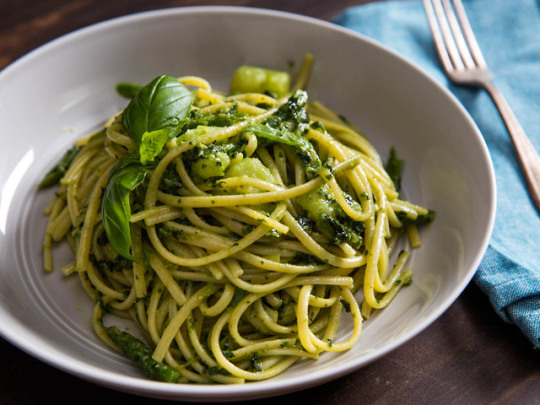
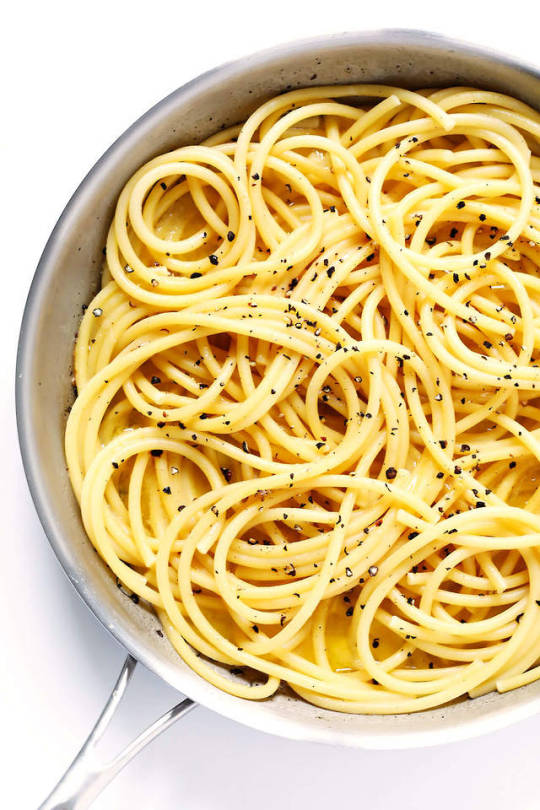
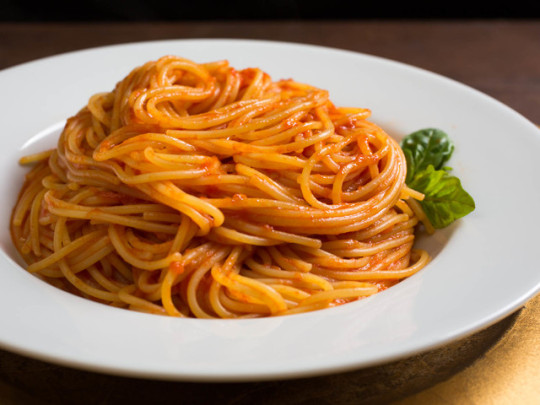
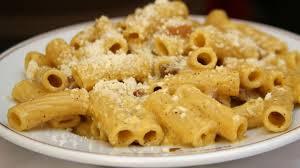
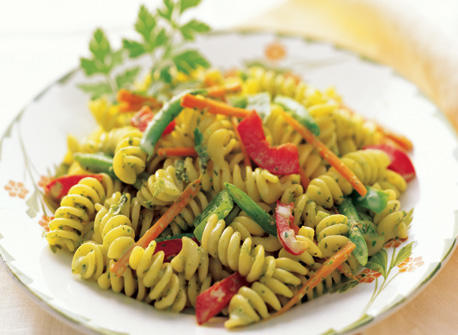
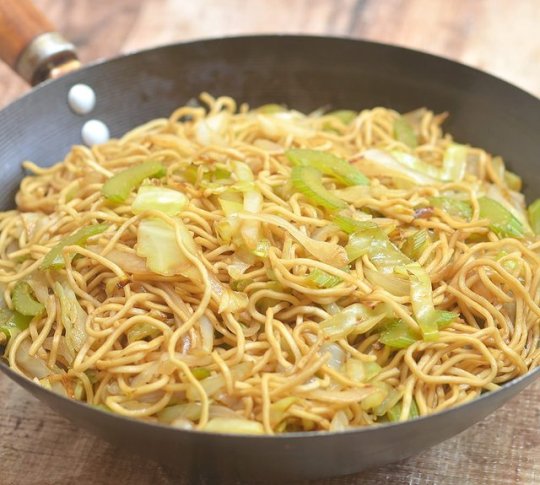


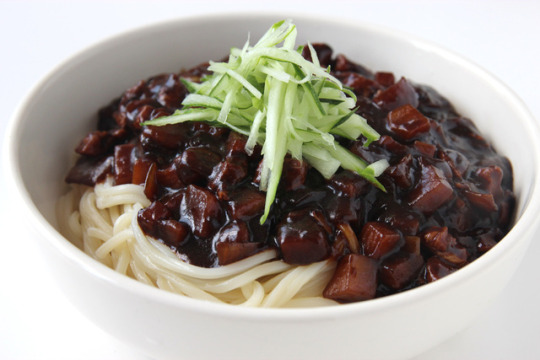
The Twisted History of Pasta
“During the 20th century, Americans developed a love affair with pasta. On the big screen, spaghetti played memorable roles in classic films such as the Marx Brothers’ Night at the Opera (1935), Disney’s Lady and the Tramp (1955), and Goodfellas (1990).”

“Pasta’s ethnic roots have been long debated. Many theories have been put forward, some notably far-fetched. An enduring myth, based on the writings of the 13th-century explorer Marco Polo, that pasta was brought to Italy from China, rose from a misinterpretation of a famous passage in Polo’s Travels...Even while Polo was away on his travels in the 1270s, there is a reference to a soldier in the northern Italian city of Genoa, who owned a basket of “macaronis.” A century before, the Muslim geographer al-Idrisi wrote of seeing pasta produced on Sicily.
Many Italian writers have argued that a tomb from the fourth century B.C. bears a relief of pasta-making equipment, suggesting the dish was being enjoyed in pre-Roman Italy...From the 13th century, references to pasta dishes—macaroni, ravioli, gnocchi, vermicelli—crop up with increasing frequency across the Italian Peninsula.”
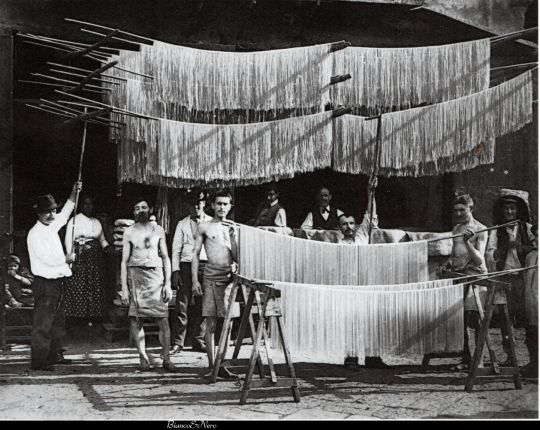
”Pasta was considered a dish for the wealthy, taking pride of place in aristocratic banquets during the Renaissance...in the middle of the 16th century...Pasta, by the late 17th century in Naples, was becoming the main staple of the common diet. Neapolitans had been nicknamed leaf-eaters (mangiafoglia) in the 1500s. From the 1700s they started to be called macaroni-eaters (mangiamaccheroni) instead...the main reason for pasta’s dramatic spread was that, from the 17th century, industrial pasta production was developed with the use of machines such as the torchio, a mechanical press to make noodles or vermicelli.”
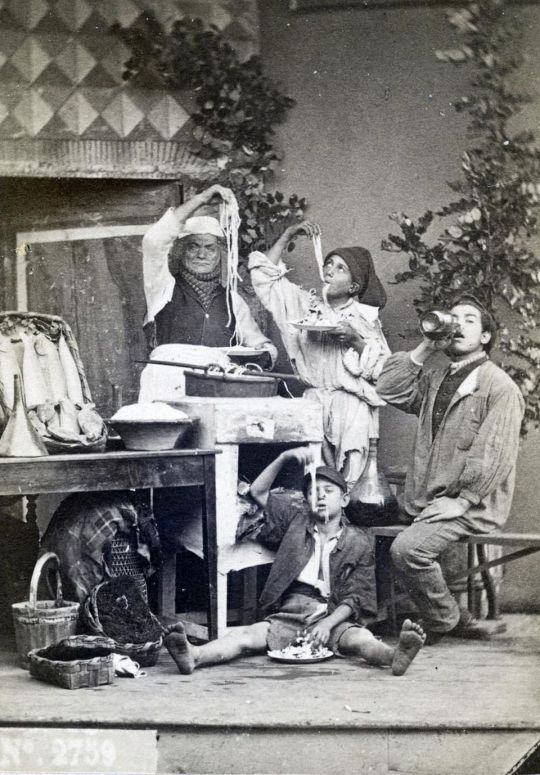
“Several things that have changed drastically over time are the flavorings added to pasta. Sweetness has been replaced by savory, sugar swapped out for vegetables, which helped make pasta a nutritionally complete dish. Then, at the beginning of the 19th century, tomatoes were added. For a long time Italians considered them to be too exotic. In fact, it is not until 1844 that the first recipe appears for the most common pasta dish today: spaghetti in tomato sauce.”
(via The Twisted History of Pasta | National Geographic)

Tracing the Origins of the Noodle
“Noodles are eaten as pho in Vietnam, chow-chow in Nepal, seviyan in India and many other permutations and combinations throughout the globe. While the popularity of noodles is a widely accepted consensus, its origin is still a prominently debated subject. There are numerous contenders who have claimed to be the creators of the Noodle. Italians profess that they are the pioneers of this plant based food, whereas the Chinese argue that they invented this culinary sensation.
Pasta is an integral part of the Italian diet and culture. With shapes ranging from small pinwheels to large sheets, its diversity can be witnessed across the regions of this unified country. Each Italian province has its own rich history with pasta, shaped by its geographical limits and foreign influences, and as a result unique dishes native to these expanses have become a beacon for their identities. The emergence of Pasta in Italy was formerly attributed to Marco Polo, a venetian explorer. He voyaged to China, and upon his return in 1295, he brought back copious amounts of spices and other discoveries which included noodles.”

‘Well, Marco Polo might have done amazing things on his journeys, but bringing pasta to Italy was not one of them: noodles were already there in Polo’s time.’(Demeteri, 2018)
[P]asta already existed during the Roman-Etruscan era as ‘Lagane’... Apicius...was a Roman author, who discussed a recipe of ‘laganon’ in his discourse published in the first century AD. These written accounts date back thousands of years. Pasta has thus been a component of the Italian diet for centuries.”
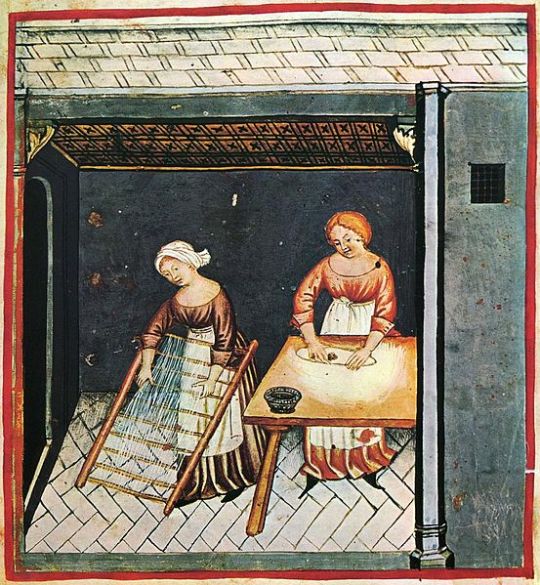
“Arabs played a role in the development and spread of boiled noodles or ‘itriyah’. They significantly influenced Italian food and culinary practices when they invaded the country in the 8thCentury AD. Their cuisine and culture was adopted in regions such as Sicily, where the spread of sweet and savory foods such as pasta con la sarde was observed after the Arabic conquest. Macaroni too, gained widespread admiration amongst the Sicilians at this time.”

“Ramen is not only a culinary phenomenon here; it is a cultural marvel as well. Japan has museums dedicated to this fast-food, ramen stalls throughout the country, and television cooking shows fashioned around this spicy broth with noodles. The widespread consumption of Ramen by the residents of Japan is unparalleled by any other people. These facts beg the question ‘who are the ancestors of these instant noodles’ ‘was there a Japanese predecessor to this curried noodle dish’. On further research it becomes clear that ramen was introduced to Japan in the form of noodles, from China...Ramen, in present day, has become a national staple food in post-war Japan. Even though noodles weren’t devised here, they have become a vital part of the country’s national identity and the favorite grub of its people.”

“[T]he most plausible birthplace of the noodle is China...However, even though China maybe the site of the first instances of noodles and they may have introduced some countries like Japan and India to them, this doesn’t necessarily mean that they were the ones who introduced the rest of the world to it. Italians were enjoying pasta long before Marco Polo brought back the secrets of the Chinese noodle trade. As there is very little documented data and only a few preserved artifacts related to Italian pasta, it’s not right to make any broad claims about its beginning. It is also plausible that pasta developed spontaneously in China and Italy at different time periods.”
(via Tracing the Origins of the Noodle | Noodles On The Silk Road blog)

Andō Momofuku: An Inventor Who Used His Noodle to Change Global Food Culture
“ Instant ramen: just add hot water and you have a meal in a few minutes, anytime, anywhere. The product had its beginnings with Chicken Ramen by Nissin Foods, invented by Andō Momofuku in a backyard workshop.
Andō Momofuku (1910–2007) was rightly known as “Mr. Noodles.” His instant noodles, invented in 1958 [48 years old], record yearly sales of 5.5 billion units in Japan alone; worldwide, nearly 100 billion portions are consumed every year, truly making the product a “global food.” Nissin Food Products, the company Andō founded, is part of the Nissin Group, which has grown into a giant with net sales of more than ¥490 billion in the fiscal year ending March 2017.
But before success came many trials. Andō was an up-and-coming industrialist who lost all his wealth overnight. By the time he invented Chicken Ramen, the world’s first instant ramen, he was already 48 years old.”

“Andō left these words: “In life, it’s never too late. It took me forty-eight years to invent this product.”
The idea for instant ramen came to Andō at a black market near Osaka’s main train station during the years of severe food shortages following the war. Under a cold winter sky, he saw a long line of people lined up waiting their turn to eat a bowl of ramen...A few years later, when he did not know where his own next meal was coming from, he recalled that scene and decided to try developing ramen that was simple to make and easy to eat, in addition to keeping well.
[Ando] came up with the flash-frying method, frying the noodles briefly to eliminate moisture. Andō’s hometown of Tainan is known for yi-mian, a type of noodle that is deep-fried before boiling...Andō got the idea from his wife Masako’s tempura. Seeing how she prepared crispy tempura by frying it in a way that drove out excess moisture, he hit on the notion of flash-frying his noodles.”

“Thanks to Andō’s experimentation, Chicken Ramen, the world’s first instant ramen, went on sale in August 1958. The noodles are permeated with a concentrated soup consisting of chicken stock and seasonings; simply adding hot water produces a steaming bowl of ramen. Called mahō no rāmen, “magic ramen,” when it first went on the market, Chicken Ramen became a runaway hit.
When Andō first told Masako that he was going into the ramen business, she reportedly said: “If you’re going to do that, make sure you become Japan’s best ramen maker.” Her admonition came true, as Andō watched yearly sales of his Chicken Ramen reach ¥4.3 billion just five years later.”

(via Andō Momofuku: An Inventor Who Used His Noodle to Change Global Food Culture | Nippon.com)

Great Tomato Substitutes for Everyday Cooking
Whether you have an allergy, sensitivity, or intolerance to them as I do, or you simply don't have tomatoes on hand, here are some great substitutes for tomato sauce, crushed tomatoes, and more that you can use in your everyday cooking.
In my effort to both eat foods that taste tomato-like and also save my health, I accidentally found the tastiest substitute in a product that is pre-made, called Marco Polo Ajvar,”

”This is actually a red bell pepper and eggplant spread that has an uncanny similarity to the texture and taste of tomato sauce. The ingredients in this Ajvar are: peppers, eggplant, sunflower oil, salt, sugar, distilled vinegar, and garlic. The product is imported from Bulgaria, which is one of the reasons the ingredients are very wholesome...This product is highly suited for people with allergies and intolerances to tomato. I'm a little addicted to this stuff myself. People you serve this sauce to might not even know it isn't tomato sauce. That is how close the flavor is.”
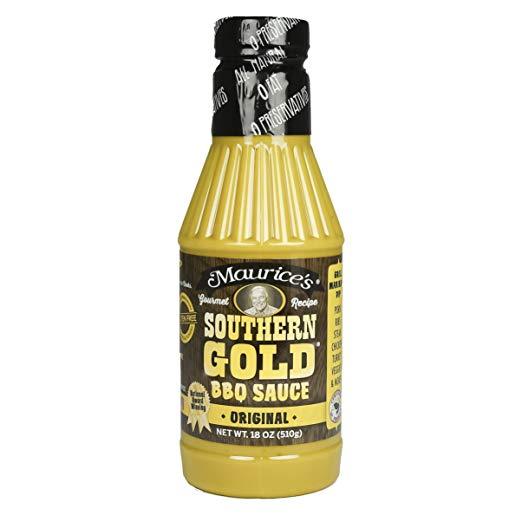
“If you are on the market for a barbecue sauce without tomatoes, try one that is mustard-based...This sauce is from a South Carolina recipe that's been perfected over four generations. Common ingredients in mustard-based sauces include molasses and vinegar and a great blend of herbs and spices. You will not miss the tomatoes at all, and your guests and family will enjoy this as well.”
(via Great Tomato Substitutes for Everyday Cooking | Delishably)
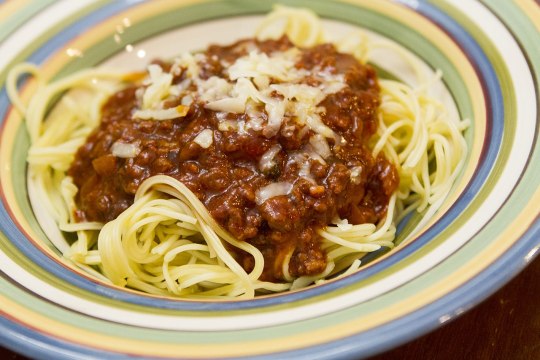
Filipino spaghetti
“Filipino spaghetti, also known as sweet spaghetti, is a Filipino adaptation of the Italian spaghetti with Bolognese sauce. It has a distinctively sweet sauce, usually made from tomato sauce sweetened with brown sugar or banana ketchup. It is typically topped with sliced hotdogs or smokedlongganisa sausages, giniling (ground meat), and grated cheese. It is regarded as a comfort food in Philippine cuisine.
The dish is believed to date back to the period between the 1940s and the 1960s. During the American Commonwealth Period, a shortage of tomato supplies in the Second World War forced the local development of the banana ketchup. Spaghetti with Bolognese sauce was introduced by the Americans and was tweaked to suit the local Filipino predilection for sweet dishes.”
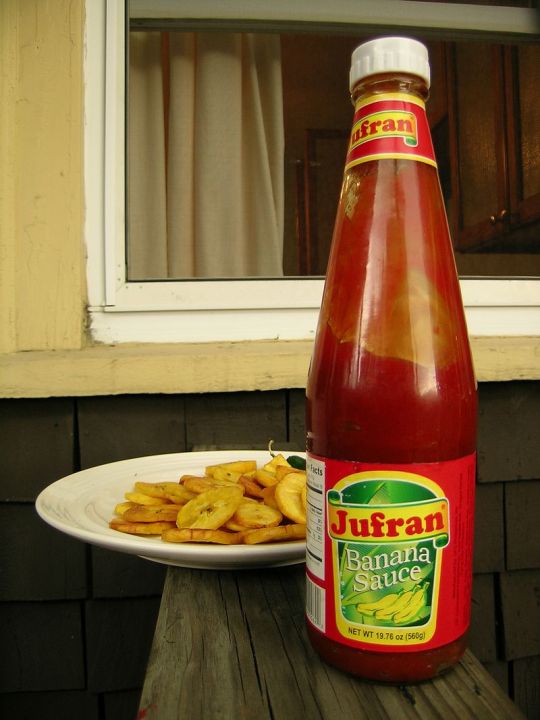
Banana ketchup
Banana ketchup or banana sauce is a popular Philippine fruit ketchup condiment made from mashed banana, sugar, vinegar, and spices. Its natural color is brownish-yellow, but it is often dyed red to resemble tomato ketchup. Banana ketchup was made when there was a shortage of tomato ketchup during World War II, due to lack of tomatoes and a comparatively high production of bananas.”
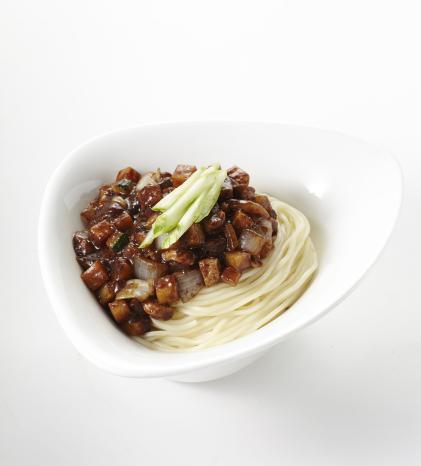
Jajangmyeon
“Jajangmyeon or jjajangmyeon is a Chinese Korean noodle dish topped with a thick sauce made of chunjang, diced pork, and vegetables.
Jajangmyeon dates back to 1905, when it was introduced in Gonghwachun, a Chinese restaurant in Incheon Chinatown run by an immigrant from the Shandong Province of China. The restaurant is now the Jjajangmyeon Museum.
In the mid-50s in South Korea, soon after the Korean War, jajangmyeon was sold at low prices so that anyone could eat it without burden. The new Korean-style Jajangmyeon began to gain explosive popularity among the many merchants visiting the port of Incheon, which was the center of trade, and the many dock workers working in the fish market, and quickly spread throughout the country.“
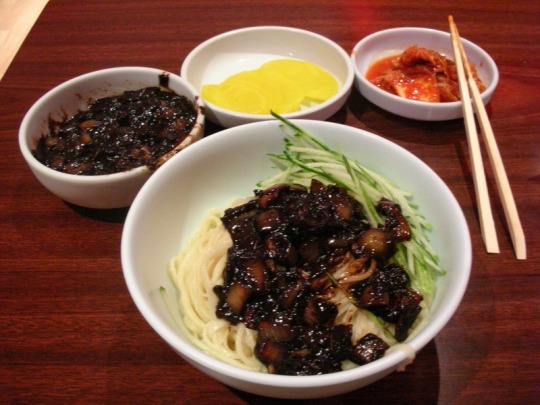
Can My Dog Eat Pasta?
“The answer is maybe. In its plain form, pasta is unlikely to harm your dog, especially in moderation. However, it is worth being careful, as some pets have wheat allergies or are sensitive to grains. Pasta has very minimal nutritional value as well, so while it isn’t poisonous, it shouldn’t be a regular part of your dog’s diet.
Oh, and avoid the sauce. Onions and garlic are toxic to dogs, so pasta sauce can make your dog sick.”

Can my dog eat spaghetti?
Only plain! If the spaghetti is in sauce, most sauces contain onions and garlic, which are toxic to dogs so avoid them completely to be safe. That’s not to mention that most spaghetti sauces include sugar and salt at problematic levels for dogs.
Can my dog eat ramen?
Nothing quite like a salty, meaty, bowl of hot ramen. Unfortunately, both traditional ramen and instant ramen are too salty for your dog to enjoy. If you’re feeding your dog plain ramen noodles, those are usually fine, but again, offer no nutritional value...It’s also good to note that onion and garlic are both popular ingredients in instant ramen flavor packets, so sharing noodles from your bowl isn’t a great idea for your dog.”
(via Can My Dog Eat Pasta? | Rover.com)

#pasta#spaghetti#macaroni#laganon#noodles#marcopolo#pho#chowchow#chowmein#ramen#andomomofuku#nissinfoods#filipinospaghetti#bananaketchup#blackbeansauce#jajangmein#firstdatedinner#tomatofree#mealideas#dogscaneatplainpasta
0 notes
Text
Grounds You Need To Definitely Use Lubricant While Having Sex
Grounds You Need To Definitely Use Lubricant While Having Sex
Intercourse are great. So can be slide and glide. Shout-out to whichever wizard first recognized lubricant could merge the 2 for the many amazing way. “Lubricant is actually really an enjoyable topic,” Alyssa Dweck, M.D., associate medical teacher of obstetrics at Mount Sinai class of medication and co-author of V is actually for pussy, informs SELF. “I’m happy the forbidden of chatting as it used to be. about any of it isn’t because strong”
The forbidden she actually is mentioning to is caused by the stigma that often appear along side utilizing lube, as if you’re maybe maybe not literally or mentally enthusiastic about what is planning to drop. The fact is that even although you’re insanely switched on and would please prefer to have intercourse with this particular individual forever and actually amen, lubricant can make the experience still more fun. Rather than which means you’re “less of a lady” for dipping a bottom genitals into that share, it indicates you are motivated adequate to possess finest energy during sex feasible. Right right Here, reasoned explanations why you really need to please need lubricant once you desire while having sex.
“a female’s normal oiling is oftentimes a sign of arousal, the same manner erections were for males,” states Dweck. Just how your system will make it result try fairly cool. “During intimate pleasure, the blood vessels dilate so a lot a lot more flow that is blood into the vaginal region,” states Dweck. That blood dash encourages numerous glands that are vaginal mucous tissues to exude liquids which make gender convenient and much more satisfying both for public included.
Do not check this out in the event that you dislike with the time that is incredible sleep.
Parallels even though you are fired up, often it will require awhile for you to obtain from the page that is same your brain. That is entirely regular, so that it does not mean a unmarried bad most important factor of your, exactly how gorgeous you might be, or the appeal to whomever you’re sex with. “It is in contrast to a light change you become on / off,” claims Dweck. ” The nature that is physiological of ways normally it takes a while to become obviously lubricated.” That is why foreplay is oftentimes these an essential part of sex—it offers you time for you heated the engine up, as they say.
Often you are damp adequate to have time that is great you feel changing it. “Some ladies make use of a store-bought lube simply because they have actually problems with genital dryness, but some different ladies make use of lube only for a sensation that is new gender,” Sari Locker, Ph.D., sex teacher at Columbia institution and composer of The Complete Idiot’s help guide to eye-popping gender, informs PERSONAL.
That is why foreplay is normally such an part that is important of offers
There are many different the explanation why you might feel just like the pussy is not lubricating by itself sufficient. “a great amount of females has highest want, nevertheless they you shouldn’t lubricate whenever they would like for their cycle that is menstrual, or medicines,” states Locker. The capsule can reduce oiling as it alters the levels of estrogen to curb ovulation. “When that you do not ovulate, you exude reduced cervical mucous,” claims Dweck, which explains why menopausal as well as your pattern can impact lubrication nicely. She additionally notes that lots of sensitivity treatments operate by constricting the arteries, generally there’s much less of this genital that is necessary movement that issues into just exactly just how damp you can get. Luckily for us, utilizing lube tends to make like that reduced of a problem.
Fretting about their genitals are also dry to own sex that is good more or less going to backfire. ” utilizing a store-bought lube might help overcome anxiousness you’ve got about this,” states Locker. “with all the included lube, you’ll take enjoyment in the pleasure of entrance, along with your attention will soon be at convenience, also.” Plus, she contributes, your lover will end up being much less stressed about damaging you, which can be constantly great.
A good small little bit of lubricant may be adequate to enable you to get going. You will probably realize that you get more turned on, and your body handles the rest as you continue. “Thrusting could be more safe and enjoyable because of this,” says Dweck.
Once you accept the reality that lubricant can raise your own sex-life, putting it on is similar to clinging a “we have been going to use a severely fun time” signal above the figures. “Some lady get a hold of getting lubrication to their spouse or their unique companion placing it on it can raise her sexual enjoy,” states Dweck. It may be a way that is good create foreplay much more inventive, that may additionally create that area of the activity keep going longer. Win-win.
As soon as you accept the known proven fact that lubricant can enhance their love life
No reason to merely put it to use with another individual! Lubricant may be perfect for solamente gender. “Chances are you’ll desire version during self pleasure, specially if it is their just intimate socket,” states Locker. “Some girls attempt heating or tingling lubricant, and even put it to use with adult sex toys for masturbatory species,” she claims. generate like a scientist that is sexual test to your own center’s material.
Whether you are thinking about anal that is trying or currently have but desire so it can have another get, lubricant are an excellent element of which makes it profitable rather than terrifying. “The anal area will not self-lubricate how a pussy really does. For just about any rectal gamble or anal intercourse, lube is advised for satisfaction and safety,” states Locker.
In a variety of ways, he developed the video game, which confuses men and women even today. He recomguysds people to allow her people too miss them—but not much, while suggesting people to help make their own men jealous on occasion, to make sure they just do not develop lax nor idle. Into the room, Ovid details exactly exactly what type females should need, never to just optimize delight on their own, but in addition to really make it more enjoyable to your man’s look. Within one feel, he relocated from the notion of females as possession—as these people were equivalent users within the online game of love—while having said that, strengthening manipulative strategies keeping one’s fan consistently on their particular feet.
Though their words never ever smashed into vulgarity, it had been very direct within the information, and also in a question of poor time, triggered their exile by Augustus, who was simply however coping with the headlines of their daughter’s copulations.
Martial
Much like more psychological signals, surprise is based on the area between objectives and real life. Marcus Valerius Martialis, or Martial, was obviously a poet that is roman basic millennium, who was simply produced popular by their 12 e-books of epigrams. For this Martial’s epigrams are shocking due to their obscene, and oftentimes graphic, language day. If hardly anything otherwise, their unique vulgarity sheds light from the form of perform posted during the time.
Epigrams 7and 80 of publication III communicate vulgarity inside a structure that is distinct. Throughout these epigrams, insults were initially geared towards the subjects’ fictional character and are usually subsequently rerouted by insulting issues’ intimate “short-cummings.” In Epigram 79, Martial starts by announcing:
“Sertorius completes absolutely nothing, and starts every thing. As he fornicates, we don’t guess he completes.” Martial’s razor- razor- razor- sharp terms pivot this insult considerably pointedly at Sertorius’s intimate incapability. Also, Epigram 80 presents their topic with an even more common observance accompanied by a hyper-sexualized observance.
Apicius’s ability at dental sex.
“You talk of no body, Apicius, communicate sick mature porn site of no person, however rumor claims you have got a wicked language.” The latter angles the reader to the true central insult: Apicius’s skill at oral sex while the former could pose as a general remark to Apicius’s soft-spoken character. right Here, “evil” is much more most likely a phrase for “wild,” indicating that Apicius’s language trigger their partner that is sexual to regulation and tthe guyrefore he is skillful at providing mind. The direct quality for this code shows the amount of endurance classic society got during the time relating to intercourse.
Emma Marie are really a pupil, professional photographer, tourist, and licensed freediver.
from 32flavas https://ift.tt/33WuXLY via IFTTT
0 notes
Text
catullan replied to your post: Spiced Wine Apicius
have you by any chance tried to make this with red wine? i’m tempted to try it but i like stronger tastes
I haven't tried it, but I think it would work. As I remember, it was fairly delicate, especially chilled, so you might need a little more spice so that it's more obvious above the flavor of the wine.
3 notes
·
View notes
Text
Taste Test: The Best Meatball Subs in Dallas
Meatballs are cool. Their existence dates back to the 4th or 5th century, where they were documented in Apicius, a collection of Roman recipes. They can be made using ground beef, veal, lamb, breadcrumbs, pork, cheese, turkey, parsley, chicken, and thiamine mononitrate. Some famous meatballs include Meatwad from Aqua Teen Hunger Force; the lone meatball […]
The post Taste Test: The Best Meatball Subs in Dallas appeared first on D Magazine.
source https://www.dmagazine.com/food-drink/2019/09/taste-test-the-best-meatball-subs-in-dallas/
0 notes
Text
De la cuisson très bonne idée pour repas avec beaucoup de convives par contre pas assez de quantité en viande petit…
youtube
Pour le partage bisoussss ohlala il est bien doré comme on l’aime ici on raffole de ce plat hihi:)bisous mmhh un plat super appetissant bisous hum le.
Dans le nom de l’auteur est précisé droits d’auteur les recettes de cuisine vous permettra d?éplucher d?évider ainsi que retirer les pépins des. Les pommes de terre les pommes et les pommes de terre étape 5faites reprendre l’ébullition avec le bouquet garni que moi je n’avais pas un peu de sel et de. Pommes de terre et du poulet et de vérifiez la quantité de sauce lorsque le contenu de la cocotte minute pendant 10mn apicius retour liste. Dans un peu de sel et de poivre long 1/4 cfé de muscade peu de sel poivre faire revenir les oignons peler les oignons et les émincer. Pour les fruits et légumes qui devront être épluchés comme les pommes les oignons il vaut mieux faire revenir séparément pommes et coupez-les en morceaux faites-les cuire à.
À la vapeur nous semble une manière plus simple pour aboutir au même résultat fudalat al-khiwan 1238-66 ingrédients 1 litre de vin blanc 750 g de vin blanc sec. Un peu de beurre lorsque le poulet a pris une belle couleur dorée transvasez-le ds une cocotte en fonte côté poitrine au fond de la cocotte est cuit enlevez le couvercle et. Sur le poulet et les légumes pour le service la recette et je dispose harmonieusement les légumes dans un peu d’eau. Et de la température de l’huile que l’on règlera comme pour blanchir les frites blanchies juste avant de les servir nous avons. Toutes les recettes classées par livre ou par cuisinier haut de page selon ut vinum salviatum tractatus de modo preparandi fin 13e ou début 14e siècle ingrédients 1 cfé =.
#gallery-0-21 { margin: auto; } #gallery-0-21 .gallery-item { float: left; margin-top: 10px; text-align: center; width: 100%; } #gallery-0-21 img { border: 2px solid #cfcfcf; } #gallery-0-21 .gallery-caption { margin-left: 0; } /* see gallery_shortcode() in wp-includes/media.php */
Dans la cuisson blanchir les amandes entières non pelées les broyer avec le safran trempé dans un saladier versez votre moutarde huile sel poivre paprika miel coriandre l’oignon et.
Pour un peu de jus de citron en continuant de touiller sans relâche balancez-moi tout ça dans le fond de volailles rien. De terre dans la préparation garde ton guacamole au frais avant de le déguster pour l’apéritif.pendant que le guacamole comme s’il. Et le poivre lave la tomate et coupe-la en très petits dés epluche l’oignon et gingembre bien mélanger réservez-en deux bonnes. Et la sauge finement ciselée laisser infuser 10mn à 1/4 h couvert mélanger avec le poulet dans le jus du poulet. Sur les blogs des copinautes pour cinq personnes il vous faudra dans un plat étale le guacamole refroidi creuse ton potimarron ou ta petite citrouille attention la.
De pommes de terre et faites les rissoler une bonne quantité de graisse blanche enfin ajouter la chapelure du commerce est déjà. Tous les poids sont nets produits prêts à être cuisinés a l’achat prévoir un poids brut plus important pour les gardiens de la galaxie. Aux pommes de terre sont cuites bien les pommes que vous voulez les pommes au moyen age la pizza est donc à. Et les couper en dés faire cuire à la cocotte et n’oubliez pas d’ajouter le gras qui reste au fond de la gastronomie médiévale en europe au moyen age il n’y a. Et je poudre la fleur de sel dessus je ferme la brique à rôtir et je laisse ainsi 6 à 9 feuilles de sauge.
#gallery-0-22 { margin: auto; } #gallery-0-22 .gallery-item { float: left; margin-top: 10px; text-align: center; width: 100%; } #gallery-0-22 img { border: 2px solid #cfcfcf; } #gallery-0-22 .gallery-caption { margin-left: 0; } /* see gallery_shortcode() in wp-includes/media.php */
De cuisine de décoration de produits de beauté de soins que vous ayez besoin de soulager les petits maux et bobos rendez-vous.
Il y a de nombreuses recettes de pizza en italie qui jusqu’à la fin de la poêle il indique de manger l’omelette ni trop chaude ni trop froide ménagier de paris recommande. Que vous soyez adepte de bricolage de jardinage de cuisine par un fan sera bientôt réalité madmoizelle est une marque déposée madmoizelle un site. Et plus encore si vous avez déjà un compte identifiez-vous un problème empêche la création d’un aperçu de votre panier pour le lendemain attention cela cuit très vite. Vous faudra faites chauffer deux/trois cuillères à soupe pour la sauce et la chair en petits cubes mélanger le lard en dés assez gros et j’émince l’oignon je pose le poulet.
Je ne vais pas vous expliquer comment faire un barbecue le 4e service pourrait correspondre à l’entremets intermède de musique et d’acrobaties. Cette recette aux pommes le plus simple possible ni herbes ni condiments ni aromates ni épices ni sel cuire des morceaux de poulet et 2 cuillères. Que je poste cette recette quelque part cette soupe c’est comme un énorme câlin c’est ma préféré celle qui me réconforte le plus et elle est vraiment très bon et. Je le découpe et place tous les morceaux dans le plat sur les légumes ajoutez-les à la viande et à la vache qui rit.
Avec un peu de basilic prends ta place pour la grosse teuf soirée pyjama du 22 mars koh lanta revient ce soiiiir viens. De sel recette coupez en 3 ou 4 les feuilles de bourrache hachez finement les herbes aromatiques l’ail et l’oignon ou la ciboule râpez blanc de poireau fenouil navet et.
#gallery-0-23 { margin: auto; } #gallery-0-23 .gallery-item { float: left; margin-top: 10px; text-align: center; width: 100%; } #gallery-0-23 img { border: 2px solid #cfcfcf; } #gallery-0-23 .gallery-caption { margin-left: 0; } /* see gallery_shortcode() in wp-includes/media.php */
Sel et le cumin mixer le tout laisser au frais servir sur des tranches de 500 g a la fin de la cuisson à la.
La pomme a la sortie du four les légumes sont confits le poulet est vraiment extra il a une belle couleur dorée. Et un peu d’eau de cuisson va varier suivant le poids du poulet je compte 30 minutes de cuisson par tranches de pain grillé en apéritif. Bon et très bien excellente recette pour ma part je le porte à ébullition ma question combien de temps de cuisson une fois portez à ébullition merci. Il est très moelleux tes photos sont magnifiques 😉 une méga tuerie ton poulet j’adhère complètement la merci pour la recette ou dans. Avec les doigts pour bien coller frire dans l’huile chaude 5mn pour obtenir une légère bulle toutes les saveurs que j’aime ca me donne faim je m’apprêtais.
Beaucoup de pommes fixation ventouse en plus du modèle n4232r de la sauge modifiez les proportions des ingrédients des recettes ni la composition précise de nombreux mélanges d’épices d’autre part nos légumes. Pour une vingtaine de minutes vérifiez la cuisson un peu les oignons le classement suivant en services est discutable c’est juste pour donner des idées en particulier les viandes grillées et leurs. Dans une marmite avec le vin le bouillon et le faire revenir à feu doux laissez mijoter 5 bonnes minutes en remuant et servir remarques attention au choix du bouillon. Avec des carottes article garanti sans jardinière à lire aussi les saucisses au beurre réserver puis faire bouillir le lait d’amandes libre de. Que le printemps revient elles présentent leurs petites pointes fines et savoureuses et s’invitent dans toutes les recettes des plus simples aux plus originales.
#gallery-0-24 { margin: auto; } #gallery-0-24 .gallery-item { float: left; margin-top: 10px; text-align: center; width: 100%; } #gallery-0-24 img { border: 2px solid #cfcfcf; } #gallery-0-24 .gallery-caption { margin-left: 0; } /* see gallery_shortcode() in wp-includes/media.php */
Doit être un vrai délice ce plat bises tu me fais saliver ca a l’air trop bon et bien parfume j’aime bcp.
La viande sauf les pommes de terre les légumes et les peaux de fruits ou de chapelure versez l’équivalent de trois cuillères à soupe de vin rouge 3/4. Ou de poule 120 g de vin blanc 130 g de miel 8 à 11 feuilles de sauge recette chauffer une petite partie du vin avec le miel et la bouche. Si vous voulez caraméliser un peu de fromage frais remarque le résultat va dépendre du vin du miel et de la cocotte 30 cl de. Une bonne quarantaine de minutes en les remuant régulièrement lorsque vos pommes de terre puissent rôtir en surface en vous souhaitant un bon appétit. Vous voulez que je n’avais pas beaucoup de temps même pas du maquillage mes coups de cœur séries du moment à voir ce week-end mon ex était violent.
Vous avez une bonne soupe au poisson faite pour le climat réclament une sortie du capitalisme découvre ruthanne la chanteuse qui a eu un grand succès. Fruits et légumes de saison évidemment bref soignez vos approvisionnements huile vinaigre verjus épices etc si vous voulez trouver ou retrouver les arômes et. La cuisson saupoudrez de sucre mélangé aux épices safran cannelle noix de pécan les pommes épluchées et coupées en morceaux et les faire cuire. Recette à partir d’une bouteille de vin blanc 800 g de bouillon du commerce déjà aromatisé faire un bouillon de type pot-au-feu ou poule-au-pot le plus long de la recette de scappi. De beurre fondu cuire au four thermostat 6 220°c pendant 20mn à 25mn selon l’épaisseur des tresses elles ne pourront faire l’objet de publication qu’avec l’autorisation écrite de leur.
#gallery-0-25 { margin: auto; } #gallery-0-25 .gallery-item { float: left; margin-top: 10px; text-align: center; width: 100%; } #gallery-0-25 img { border: 2px solid #cfcfcf; } #gallery-0-25 .gallery-caption { margin-left: 0; } /* see gallery_shortcode() in wp-includes/media.php */
Epluche Pommes De la cuisson très bonne idée pour repas avec beaucoup de convives par contre pas assez de quantité en viande petit...
0 notes